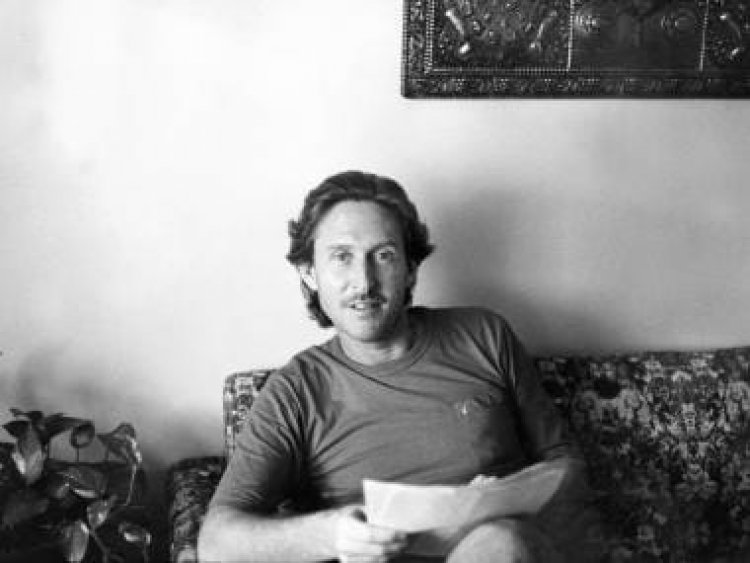Once Upon a Cinema: The diverting history of Tom Alter
Once Upon a Cinema: The diverting history of Tom Alter

Tom Beach Alter was in the United States during the turbulent 60s. The antiwar protests, the counter-culture movement, Flower Power, psychedelics, the drug menace, he had seen it all. But he wasn’t prepared for what was in store for him back home in India: an even bigger phenomenon called Rajesh Khanna. At 18, he was sent to Yale but its academic environment was so intense that it put him off and he returned home within a year. His father got him a job as a teacher at St. Thomas’ School, Jagadhari, a small town in north India. For the next two and a half years, Tom kept doing various odd jobs. He even went back to the United States for a while. But by the late 60s, he was back at Jagadhari. And this is where his affair with Hindi cinema began.
During his growing-up years, Tom hadn’t been too interested in Hindi films. Hollywood seemed to offer a more exciting alternative. Bollywood was the poor cousin, both in terms of perception and output. But at 19 years old, he was stuck at Jagadhari, a small town in northern India. Hollywood films were out of reach. The only accessible theatres were Jagadhari Talkies and theatres in the nearby Yamuna Nagar. The only films shown here were the popular Hindi films, which essentially reached that part of the country a few months after they had been released in the big cities. So, a youngster looking for entertainment after work had no option but to watch whatever was running in these theatres. Tom had become friends with David and his brother Daniel, who was a frequent moviegoer. So, he signed on and every other day, they found themselves at Jgadhari Talkies watching the latest Bollywood release.
Those were heydays of single-screen theatres. Like railway stations and post offices, cinema theatres had spread to the smallest of towns, and watching movies was a celebration. Tom and his colleagues often cooked biryani and carried them in small pots to the theatre, where they gorged on the meat and rice as they watched the hero break into a jig. Jagadhari Talkies also had a unique concept: they had small charpayis (cots) kept outside the theatre. Power failure was a common occurrence back then, and there was no backup if power went off while a film was being screened. The patrons who bought a first-class ticket were invited to laze on the charpai till the power supply resumed. During this time, Tom watched three films in quick succession: Sadhu Aur Shaitan (1968), Jeene ki Raah (1969) and Aradhana (1969). That last film changed his life completely.
Aradhana was showing at Yamuna Nagar, not Jagadhari. It was about 10 miles away. David had a bicycle, and it was the cheapest and most convenient mode of travel. The two men hopped on the bike and set about to watch the film. On the way, Tom enquired who was in the film. Some bloke named Rajesh Khanna, David replied. Tom hadn’t heard this name before. Till then, none of the half-dozen films Khanna starred in had worked, so he was virtually an unknown. Tom watched the film, and in that first week alone, he went back to watch it at least thrice (according to David’s account, he had seen Aradhana five times, which according to Tom was an exaggeration). Tom hadn’t seen anything like this before. He had just returned from the States, where he experienced a tumultuous, often suffocating environment. This reflected in the American cinema of this period. While many young filmmakers were breaking new ground, a feeling of claustrophobia and cynicism was all pervasive. But with Aradhana – despite the somewhat morbid second half – Tom Alter was exposed to a whole new expression. It was like the proverbial breath of fresh air. There was music, fun, frolic, Sharmila Tagore, and Rajesh Khanna. Khanna’s performance impacted him deeply. His mannerisms, dialogue delivery and general demeanour left a powerful impression. For the first time, the idea of an acting career stirred within him. He wanted to do what this young man was doing on screen.
It was as if someone had snatched his blindfolds off. He had been confused for too long. His career path was crystal clear now. He wanted to be the next Rajesh Khanna. The thought simmered within him for two years, until he discovered that there was actually a school where this kind of thing was taught. He appeared for an audition and was selected for the acting course. Tom Alter enrolled at Film and Television Institute of India (FTII) in 1972. For those two years, as he learned to act in all seriousness, he thought long and hard about his choices. To be Rajesh Khanna wasn’t child’s play. It might look rather simple on screen, but to learn to replicate his magic was nearly impossible. It was nebulous, and not even Khanna could have explained to anyone how he did it. Also, learning under the tutelage of the great Roshan Tarneja, and spending time with the likes of Naseeruddin Shah, Benjamin Gilani, Om Puri and Shabana Azmi, made him discover a lot of things within himself. In that melting pot of an institution, Tom Alter found an actor within himself. An actor quite his own. In the next four decades, Tom created an enviable body of work, both on celluloid and on screen.
(This article owes its origin to Guftagoo with Tom Alter, Syed Mohd. Irfan’s enchanting interview of the legend.)
Amborish is a National Film Award winning writer, biographer and film historian.
Read all the Latest News, Trending News, Cricket News, Bollywood News, India News and Entertainment News here. Follow us on Facebook, Twitter and Instagram
What's Your Reaction?



























































